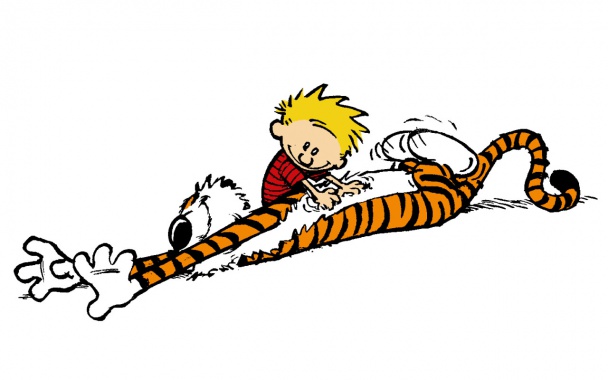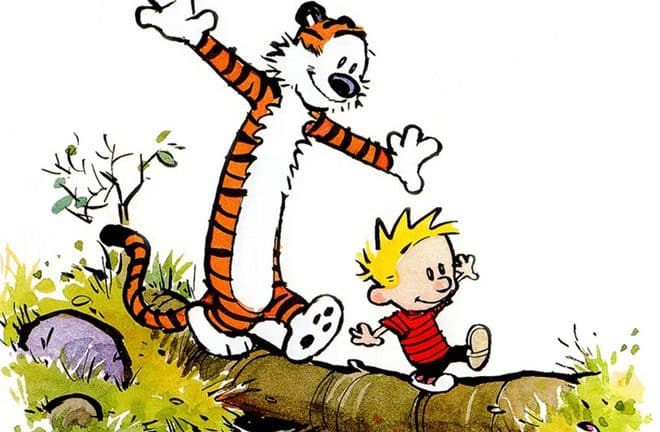Find out how they got their names and the hidden references in two iconic cartoon characters, Calvin and Hobbes
Bill Watterson’s work, Calvin and Hobbesstands out as one of the most beloved and intellectually rich comics in modern history. Though full of philosophical undertones, Watterson’s real genius lies in his ability to keep the strip accessible and entertaining. for readers of all ages. He never let the deeper messages overshadow the playful interactions. and often on the move among the main characters, Calvin and Hobbes. Instead the philosophical subtext enriched the narrative, making the strip resonate on multiple levels.
From its birth in 1985 until 1995, Calvin and Hobbes quickly became a mainstay of newspaper comics. Often called “the last great newspaper comic strip,” the series captivated readers a unique mix of humor, darkness and witThe strip’s central charm lies the dynamic between Calvin, a mischievous and imaginative boy, and Hobbes, a stuffed tiger who comes to life in Calvin’s presence. This relationship, while often comical, also served as a platform for explore deeper philosophical themeswhich Watterson deftly wove into the fabric of the strip without detracting from its playful charm.
In the heart of Calvin and Hobbes there is a clever play of philosophical ideasstarting with the names of the characters. Calvin is named after John Calvinkey figure of the Protestant Reformation, known for his doctrine of predestination, while Hobbes is named after Thomas Hobbesthe English philosopher famous for his views on human nature and the need for a strong central authority.
Characterization of Calvin and Calvinism
Watterson’s choice to name his young protagonist Calvin reflects a subtle criticism of Calvinist philosophy. Calvino, the character, embodies many of the traits associated with the teachings of John Calvinin particular the idea of predestination. This is evident in the frequent Calvin’s Theatrical Scenesreflecting a desire for control and dominance, often excluding and belittling her classmate, Susie Derkins. Through these behaviors, Watterson seems to mock rigidity and authoritarian tendencies. of Calvinist thought, using the antics of a six-year-old to highlight his perceived flaws.
John Calvin, the historical figure, was a religious leader who wielded significant power in Geneva during the Reformation. His rigorous interpretation of Christian doctrine, including the idea that humans are predestined to salvation or damnation, influenced his rule, leading to often harsh and ruthless policies. Watterson’s portrayal of Calvino as a sometimes petty and tyrannical figure serves as a subtle critique. to these aspects of Calvinism, suggesting that this worldview is, in its essence, infantile and narrow-minded.

A Reflection on the Philosophy of Thomas Hobbes
Unlike Calvino, Hobbes represents a more mature and realistic perspectivesimilar to that of his namesake, Thomas Hobbes. Known for his work Leviathan (1651), described Thomas Hobbes the natural state of humanity as “solitary, poor, ugly, brutish and low”advocating a strong central authority to maintain order. Although Watterson’s Hobbes shares this somewhat pessimistic view of human natureHe also displays a warmth and wisdom that adds depth to his character.
Hobbes often serves as a counterweight to Calvino’s impulsivenessoffering a more realistic and sometimes cynical perspective on life. For example, when asked if he believes in the Devil, Hobbes wittily replies: “I’m not sure that man needs help.”. This line encapsulates his view of humanity as inherently imperfectbut never loses his sense of humor or moral compass. Unlike Thomas Hobbeswho saw the solution to human conflict in an authoritarian government, Hobbes of Watterson Find comfort in the simplicity and joy of life’s little pleasures.embodying a more balanced and humane philosophy.


Watterson’s Genius of Subtlety
What does it do? Calvin and Hobbes What is truly remarkable is Watterson’s ability to infuse the strip with these complex ideas without letting them overshadow the story.The philosophical underpinnings are there for those who want to find them, but they are never necessary to enjoy the strip. Watterson’s true genius lies in his ability to create a comic that can be appreciated on multiple levels.from the simple humor of a boy and his tiger to the deeper exploration of human nature and belief systems.
For example, One memorable strip features Calvin’s mother scolding her son for building an anatomically correct snowmana purely funny joke with no philosophical implications. In another, Calvin Mourns the Death of Baby Raccoonreflecting on the nature of loss in a moving and profound way, again without being directly related to the strip’s broader philosophical themes.


The Enduring Fascination of Calvin and Hobbes
While Calvin and Hobbes It ended almost three decades agoits relevance has not diminished. The strip continues to be a cultural referencecelebrated for his wit, humor, and thoughtful approach to complex ideas. Casting his characters as historical thinkers with diametrically opposed belief systems, Watterson has created a narrative that invites readers to reflect on their own beliefs. and the world around them. However, the real magic of Calvin and Hobbes lies in its ability to touch the hearts of readers regardless of your familiarity with its philosophical roots.
In essence, Calvin and Hobbes talks about the joys and challenges of childhoodthe power of imagination and the importance of friendship. Watterson never allowed the intellectual elements of the strip to overshadow these universal themes.guaranteeing it Calvin and Hobbes to run out of timea comic that can be enjoyed by anyone, at any age and with any level of understanding.

